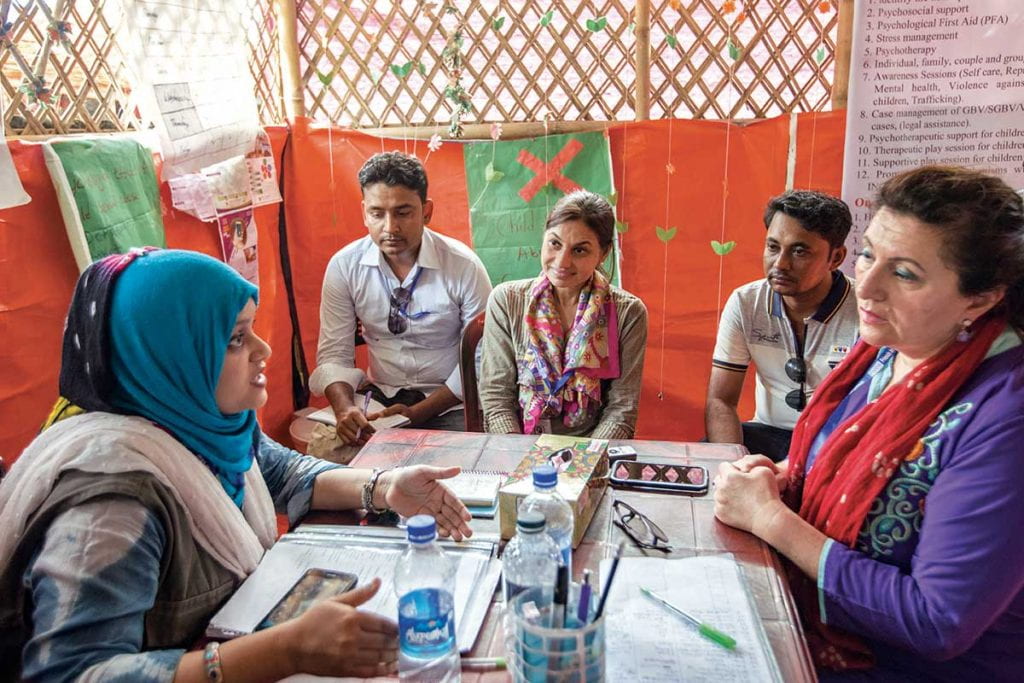COX’S BAZAR DISTRICT, Bangladesh — From high atop barren hills and the crests of skinny, rutted roads, the views of the vast camps that serve as makeshift homes to more than 900,000 Rohingya refugees are staggering.
In every direction, stretches of hastily built, criss-crossed bamboo walls and roofs hold in place dirty orange, blue, black and white tarps that offer scant protection from monsoon rains and the blazing sun. The tiny huts — thousands of them — stand crooked, as if dropped into place by a cyclone, or upright, in crammed rows backed into hillsides stripped of vegetation.
Within each of those thousands of shelters is a story — many too hard to tell, all immersed in pain and loss.
Rupa Patel and Anne Glowinski, colleagues at the School of Medicine, want to hear the stories and want the Rohingya to know they’re being heard.
Patel, MD, MPH, a public health specialist, and Glowinski, MD, MPE, a child and adolescent psychiatrist, visit the camps as part of their work with a Bangladeshi organization to help provide refugees access to mental health care.
Bangladesh, United Nations (U.N.) agencies and an international network of aid organizations have responded to the ongoing crisis with food, shelter and medical care. Still, the refugees desperately need mental health care.
Many of the Rohingya lost everything in their home country of Myanmar. Survivors tell of rape, murder and villages burned to the ground by military forces. They tell Glowinski and Patel their culture doesn’t have a word for mental health, but that they know what it looks like when someone’s mental health is in trouble. It’s when their neighbors can’t stop crying. When men and women repeat the same horrific stories over and over. And when they and their children have nightmares that don’t go away.
And there are so many nightmares.
